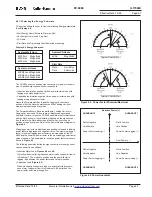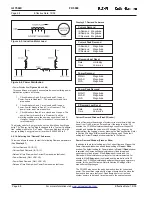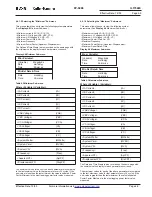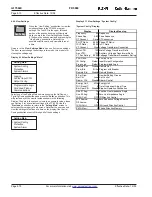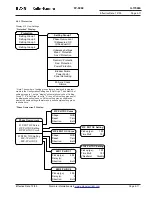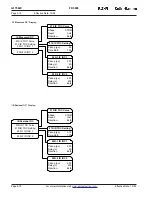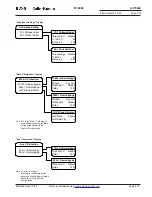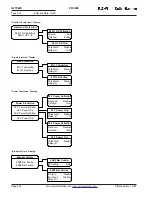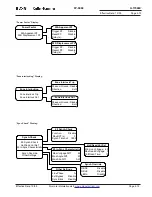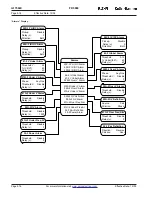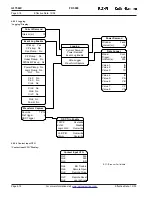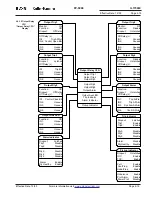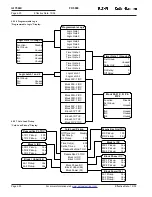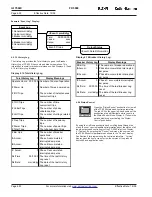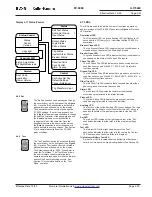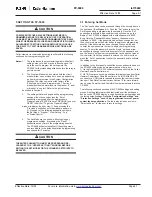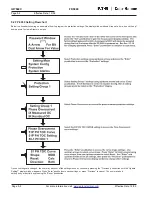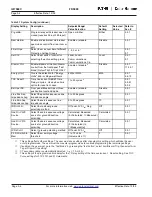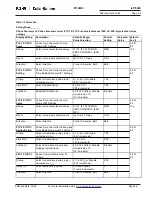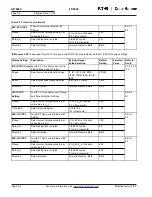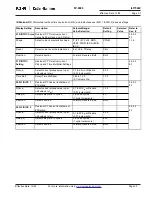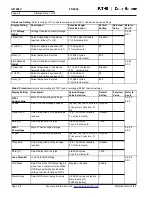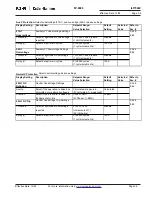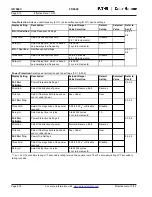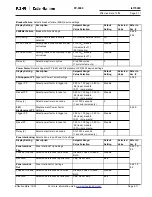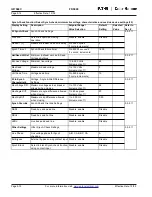
FP-5000
IL17569C
Page 4-21
Effective Date: 12/05
Effective Date: 12/05
For more information visit:
www.eatonelectrical.com
Page 4-21
4.6.3 Logs
There are three types of logs: Trip Log, Event
Log and History Log.
• The Trip Log provides details for the most
recent 16 trip events.
• The Event Log is a sequence of event
reports for the last 100 events.
• The History Log provides a counter for the
number of operations and/or events that
occurred on the unit.
See Section 12 for log details.
Press the “
Log
” pushbutton to go in to Log
Mode and to view the FP-5000 Trip, Event
and History Logs. The red LED in the upper
left-hand portion of the pushbutton area will
illuminate while you are in the Log Mode.
The chart below shows the options provided
by pressing the “
Log
” pushbutton.
Display 4.13 Log Main Menu
Log Main
Trip Log
Event Log
History Log
4.6.3.1 Trip Log
The Trip Log stores the trip information for the last 16 trip events. An
example of the “Trip Log Display” showing two trip events is
displayed below. The #1 event will always show the latest trip event.
When the 16 trip event logs are filled, the FP-5000 will overwrite the
oldest log.
Trip Log
1 50P IOC 1/19/01
2 Relay Test 10/25/00
3 0/0/00
By using the “Up/Down” pushbuttons, the user can select any trip
event. Using the example above, the #1 event is an “instantaneous
overcurrent” trip on phase that happened 1/19/01. By selecting this
event with the Up/Down arrows and pushing the “
Enter
” pushbutton,
the user can view additional information about the event. Display 4.14
is an example of the trip log information.
Display 4.14 Trip Log #1 Example Display
4.6.3.2 Event Log
The Event Log provides a time-stamped list of the most recent 100
events. Select “Event Log” in the Log menu to view these events.
The logged events include pickup and dropout of protective or control
functions, trip, change of state for contact input and outputs, and
setting changes. The data logged for each event includes the event
number, event I.D., a time stamp, and an optional 2 byte parameter. The
user may disable logging of any event category except a trip or a
self-test warning. By using the “Up/Down” pushbuttons, the user can
select any event and retrieve its information. Refer to section 12.2.1
for more information on the Event Log.
“Communications” Display:
4.6.2.8 Communications
Communications
INCOM
Accessory Bus
RS232
INCOM
Enable: Yes
Address: 0x0001
Baud Rate: 9600
Accessory Bus
Address: 0x0002
Baud Rate: 9600
RS232
Baud Rate: 19200
150P IOC 1/19/01
Display Meanings
Trip #:
2
Trip #
Time: 13:36:06.109Time of trip
Event #:
27
Event #
Cause:
50P IOC
Cause of trip
Flt Type:
AG
Fault Type
Set Seq Num:
0
Setting Sequence Number
WaveCap Index
34
Waveform Capture Index
ActiveSetGrp:
1
Active Setting Group
TripStatus:
Processed
Trip Status
TOC Time ms
NA
Time Overcurrent Trip Time
Input Status
Input Status
Output Status
Output Status
IOC Pickup Status
Inverse Time Overcurrent Status
V Ph Pickup Status
Voltage Phase Pickup Status
Voltgage Pickup Flag
Voltgage Pickup Flag
TOC Pickup Status
Time Overcurrent Pickup Status
Misc. Pickup Status
Miscellaneous Pickup Status
OC Trip Status
Overcurrent Trip Status
Misc. Trip Status
Miscellaneous Trip Status
Volt Trip Status
Voltage Trip Status
Output Gate Status
Output Gate Status
Logic Block Status
Logic Block Status
Logic Gate Status
Logic Gate Status
SYSALM Pickup
System Alarm Pickup
SYSALM TimeOut
System Alarm Timeout
Breaker Status
Breaker Status
Directional Units
Directional Units
Sync Control
Sync-Check Control
OGx Input Settings
Output Gate Input Settings
OGx Input State
Output Gate Output Setting
Trip Test Status
Trip Test Status
RMS Values
RMS Values of Voltages, Currents
V&I Phasors
Voltage & Current Phasors
Log

